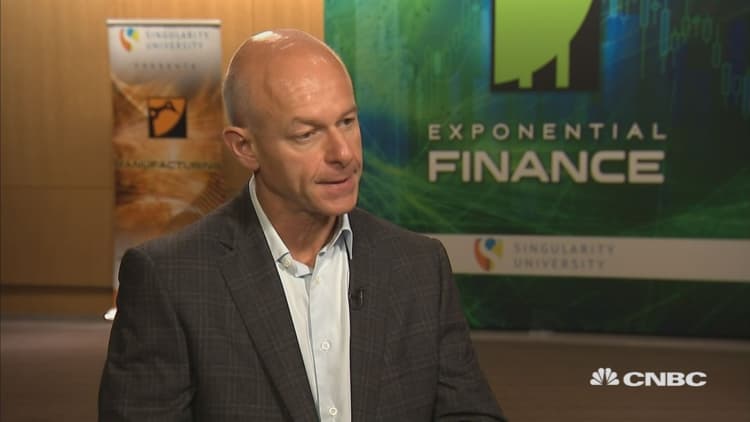
Today I'm co-moderating the Singularity University's Exponential Finance Conference in New York, looking at the intersection between technology and finance and industry.
One of the most interesting speakers today is Marco Annunziata, chief economist of General Electric.
Big data is changing even the way old industrial companies operate. Digital technology has become more pervasive on the industrial side of the economy, and Annunziata has been in the forefront.
Call it the "Industrial internet" if you will. Take industrial machines from jet engines to medical equipment and turn them into intelligent interconnected devices. Suddenly, you are no longer just selling assets, you are selling services.
You can improve the performance of the machines. You can better predict when the machine will break. Their functionality can be extend, exchanged and improved. There are cost reductions, and more up time for the machines. Ownership of the assets become less important: they are part of a suite of services.

This forces a change in your business model. For example, GE can see a clear disruption in the energy value chain. Annunziata provides just one example: He sees tremendous value in the information that can turn a city's lighting system into the neural network of a city, that can help manage the flow of traffic, monitor weather, guarantee better safety through better control of lighting.
Here, you are selling outcomes, different ways of selling electricity to improve life conditions.
This is happening across many industries.
Software is permeating every aspect of the production process of a company. You have sensors in the machines on the factory floor, with workers carrying iPads. You have much closer control of your supply chain.
All these changes bring not just greater efficiency, but even changes in how machines work. By changing the software you can repurpose a machine.
Annunziata provides me with another example: Wind generation. Wind turbines are now intelligent — they have sensors and software. They can now react intelligently. When the wind changes direction, you can change the inclination of the blades on a single turbine to make it more efficient. But now GE has developed software that enables the turbines to communicate with each other so all the inclination of the blades change at the same to maximize the power output of the wind farm as a whole rather than each individual turbine.
Building a few sensors into a machine and adding software does increase its utility, but its functionality is still limited in that the mechanics of the machine have already been built.
But what if software is what the machine largely is built around? That's the whole point of Tesla, Annunziata said. With Tesla, the cars are built to be able to change based on changes in software.
We will see soon see something similar in industrial machines. They will be able to regulate themselves without human operators. The next generation of industrial machines will be doing something different than the original function based on changes in software. This will enable companies to operate with fewer machines.
Smaller factories — microfactories — can suddenly become more profitable. If you can produce on a smaller scale, you have more flexibility to start production as demand waxes and wanes.
And, of course, you will have a lot more control over the production process. You can work your machines 24 hours or a couple hours a day. But you will know exactly what the wear and tear of the machine is over time. With software you can optimize how hard you work it, a process called "dynamic optimization."


